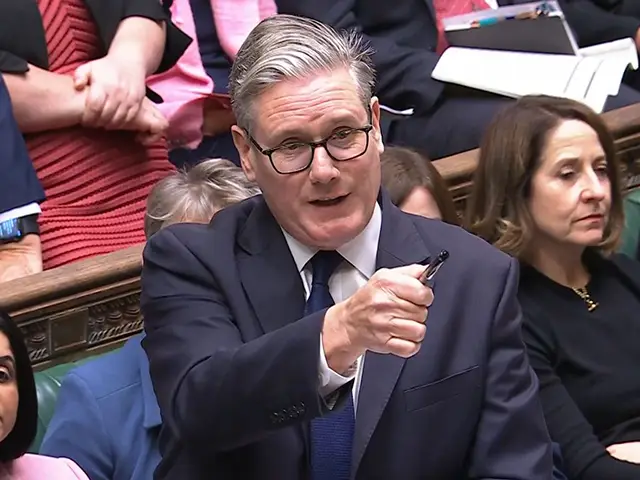Support quality, independent, local journalism…that matters
From just £1 a month you can help fund our work – and use our website without adverts. Become a member today

By Matt Wall, Swansea University and Louis Bromfield, Swansea University
If any seat has a claim to be part of Labour’s electoral heartland, it is Caerphilly. Labour’s electoral dominance there reaches all the way back to the creation of the constituency in the 1918 UK general election, when Alfred Onions became the the first of many Caerphilly Labour MPs. This pattern has heretofore been replicated in Wales’s devolved elections, where the seat has always returned a Labour member.
This gives a sense of the blow dealt to Welsh Labour in the Senned by-election held there on October 23. Plaid Cymru candidate Lindsay Whittle, a man who has stood and failed to win in the constituency in ten Westminster elections going back to 1983, won the Caerphilly Senedd seat with 15,960 votes to Labour’s 3,713.
In one sense, this was a surprise result. Reform’s Llŷr Powell was the bookies’ favourite to take the seat and Whittle’s vote share was well above what pundits and analysts had anticipated. Labour’s third place finish was widely predicted but, ultimately it undershot even the dismal expectations set. Plaid Cymru’s 11.4% margin of victory over Reform was greater than Labour’s entire vote share.

Typically, by-elections are difficult to project forward onto nationwide votes so it’s not wise to predict future Senedd or general elections from these results. By-elections often play out amid emotive and idiosyncratic circumstances, such as a member resigning in disgrace or an unfortunate passing. With the death of Hefin David, this contest falls into the latter. By-elections are also often difficult for parties in government, as they can engender protest vote dynamics. Voters feel able to give governing parties a kicking with relatively few political consequences.
This particular by-election is particularly unrepresentative of next year’s Senedd election, because the single-seat tier of the Welsh electoral system has been removed for future Senedd votes. This means that tactical voting incentives won’t be anywhere near as pronounced come next May’s Senedd election.
Threats on both sides
With these caveats in place, however, we can still draw out lessons from Labour’s Caerphilly defenestration. The results show a mass abandonment of the Labour party, providing behavioural proof of a wider pattern of Welsh Labour abandonment captured in national polling.
Were such a result to be replicated at the full Senedd elections in May 2026, Labour would be skirting electoral oblivion. Its decisive defeat in this historical heartland means that such an outcome, previously a hypothetical based on polling figures, can no longer be dismissed.
The willingness of many former Labour voters to place their trust in Reform is partially a response to a UK Labour government that has struggled to make progress on bread-and-butter issues since coming into office. More in Common estimates that approximately 11% of Labour voters in the 2024 election would vote for Reform if an election were held tomorrow. This would make Reform the party that most benefits from a UK-level disenchantment with Keir Starmer’s premiership.

On the left of the spectrum, traditional Labour voters have been alienated by the inability or unwillingness of the Labour government to provide daylight between itself and the previous Conservative administration. In Wales, this problem has been rendered almost comical by current First Minister Eluned Morgan’s attempt to promote a “Red Welsh way” narrative – and attempt to show that Welsh Labour operates differently to its Westminster counterpart, despite a lack of evidence to support such a claim.
As a result, a similar “why not?” logic may lie behind Labour voters pivoting to Reform on Labour’s right and Plaid Cymru on its left. If Labour is bleeding support on both sides, the strategy for winning voters back becomes all the more difficult. Pleasing Reform-adjacent/disaffected Tories has been a notable aspect of Starmer’s governance, and it seems that now those on the left of the party are showing their frustrations – these are two groups of voters that cannot be won over by similar policies.
Reform is beatable
The other perspective from the Labour-to-Plaid pivot could be that voters saw the latter as the only legitimate bulwark against a tide of surging Reform sentiment. Voters tactically coalescing around the best “anti-Reform” option could be something that comes back to haunt Nigel Farage’s party.
Labour might think that this contingent can be won back in next summer’s proportional representation election, when the threat of a “winner-takes-all” result should be less of a factor, thereby reducing the need for tactical voting. Winning back voters, however, is easier said than done in a national context where Starmer is the most unpopular Prime Minister in British history at this stage of an administration.
What is also important to consider is where Reform could’ve pulled more votes from. The Conservative vote share dropped from 17% in 2021 to a measly 2% this year. Had they all gone to Reform, and all of the 5% who voted “other” went as well (as improbable as that is), Plaid still would’ve won by four points.
If Reform is to win contests like this, increasing turnout beyond the typically low levels of Welsh politics (no Senedd election has ever had above 50% turnout before this by-election, which just tipped over into 50.43%) is seemingly the only way to go. But that’s a tough ask for Reform’s fledgling Welsh party machine.
Looking to 2026
While this second place result can be seen as something of a stumble for Reform’s momentum ahead of the national Senedd elections next May, the party will take a great deal of comfort in the fact that this is a colossal improvement over 2021, when it took just 2% of the vote. An increase of 34 points in one seat, especially one that was a safe left-wing seat, suggests that Reform could be well positioned in areas currently held by Tories or in seats where Labour have much smaller majorities (Hefin won by 18 points in 2021).
This lends more credence to the notion that Reform are now the de-facto right-wing option in Wales and Britain more broadly.
On the Welsh left, this win will undoubtedly spur a renewed vigour within Plaid Cymru, with party leader Rhun ap Iorweth already claiming that his party has popular momentum. Other left-progressive parties such as the Greens will also take heart from the collapse of the Welsh Labour vote, a loss for Labour does not mean a win for Reform by default.

What this result makes crystal clear is that Welsh vote intentions have shifted dramatically away from Welsh Labour, which is now in the middle of the very same backlash against the status quo that delivered it a general election win against the unpopular Conservatives in July 2024.
Upon winning, Whittle stated: “Listen now Cardiff, and listen Westminster.” Welsh and UK Labour politicians would be wise to take heed. If events in Caerphilly give any portent of what is to come, there will be a clear red divide – but it will be between Labour and power.
Matt Wall, Associate Professor, Political and Cultural Studies, Swansea University and Louis Bromfield, Postdoctoral Researcher in Politics, Swansea University
This article is republished from The Conversation under a Creative Commons license. Read the original article.
Support quality, independent, local journalism…that matters
From just £1 a month you can help fund our work – and use our website without adverts.
Become a member today
